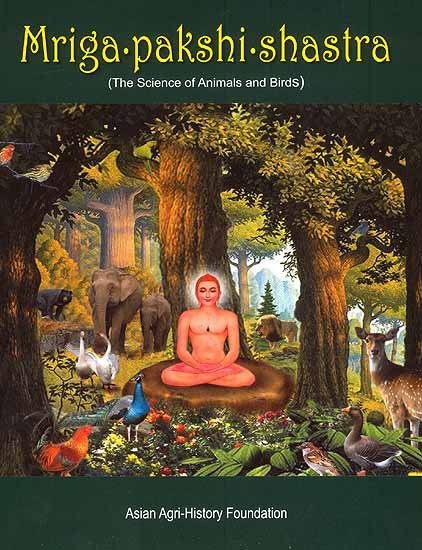Animal Kingdom (Tiryak) in Epics
by Saranya P.S | 2019 | 51,616 words | ISBN-10: 8190396315 | ISBN-13: 9788190396318
An English study the Animal Kingdom (Tiryak) in Epics.—The present thesis is based entirely on Ramayana and Mahabharata although an attempt is made to analytically compare the Animal kingdom with Mriga-pakshi-shastra—‘The ancient Indian science of of Animals and Birds’....
Chapter 6.14 - Shakuntala-upakhyana
In this Upakhyana the Mrigaya Journey of Dushyanta is described in the most exquisite literary fashion. When the Caturangasena is described, we can hear the roar of lions, the hissing of snakes, the fall of horses' hooves and the trumpeting of elephants and the hullabaloo of all the noises and sounds. During Dushyanta's forest journey there were many mountains and peaks. There was, to an extent, no human habitation or water anywhere near where he was moving. But the place abounded in various wild animals including lions and other animals of prey. It is surprising to note how all these wild animals survived in those places which lacked water bodies. By beautifully describing the mrugaya journey of Dushyanta the poet took the readers to the height of enjoyment. We see lions and cheetahs fleeing the forest. Cows are running helter-skelter as they are confused at the death of the cowherds. Some of them are groaning and lamenting. Some of them are fainting and falling down because of the lack of drinking water.
Some animals die of hunger and other animals eat them. Hunters sometimes cooked the meat of dead animals and ate it. The scenes of wild elephants kicking other animals out of their ways as they run can be seen both in the Mahabharata and also in Padmapurana. Kalidasa had made the description of the forests very vivid. But the descriptions of forests in the Padmapurana is very scanty. But in the Mahabharata such descriptions are ample and vivid.
The study of this Upakhyana brings up many questions. What is the central point in this story? Is it the death of Parikshit or the curse? The clear focus is on the death Parikshit because of the bite or the snake. This can't obviously be a matter of dispute. In fact, there is a possibility that it is not a snake that bit Parikshit. It is something that requires our contemplation. What was the necessity for Takshaka itself to come and carry out the curse given by Shringi, the son of a Rishi? Why should Takshaka kill the king as he had no enmity with him and without getting instructions from higher authorities?
Takshaka meets a Brahmin belonging to the Kashyapa dynasty on the way. Takshaka is going to kill Parikshit and the Brahmin is going to save him. Kashyapa has the capacity to destroy even the most the powerful venom of the snakes. According to the story going round. Takshaka gave a lot of money to the Brahmin and made him go back. But the question is how did Takshaka get so much money at that particular time? From all this it is obvious that in truth the only individual who wanted Parikshit to die was Takshaka. The curse of Shringi was merely a reason in passing.
Since the ancient times, in all regions of the world, the immensely powerful forms of snakes have been exhibited. Even today detailed history of this potent group is available. From this it is clear that the snake bite that Parikshit got was an attack from the snake kingdom. His death occurred because of that.
The story of Fire cursing frogs, tortoise and elephant is described in the Mahabharata.[1] When Agni was distressed at the curse of Bhrigu Muni. Parvati cursed the devas and the asuras defeated them. Then there was the need for Kartikeya to be born. Devas knew that only Agni had the capacity to produce SubRamanian the victor over asuras and so they went in search of Agni. When Parvati cured the devas, Agni was living away incognito and therefore the curse did not affect him. Agni was hiding in the sea. The frogs which could not tolerate the heat told the devas about Agni. Agni was enraged at this betrayal of the frogs and cursed them saying that they will not enjoy the taste of anything. But with the boon of the devas they got the capacity to roam about anywhere even in the darkest of nights.
After that Agni hid himself in the hollow of an arani or sami tree. The birds living on that tree pointed out Agni to the devas. Agni cursed the birds that their tongues would be turned inward. But the devas blessed them saying that in spite of the crookedness of their tongue, they would be able to produce melodious words. Since Agni was found in the hollow of the Shami tree, the hollows of sami tree became a hallowed place for all funeral rituals.
Footnotes and references:
[1]:
Mahabharata . 85. 36
